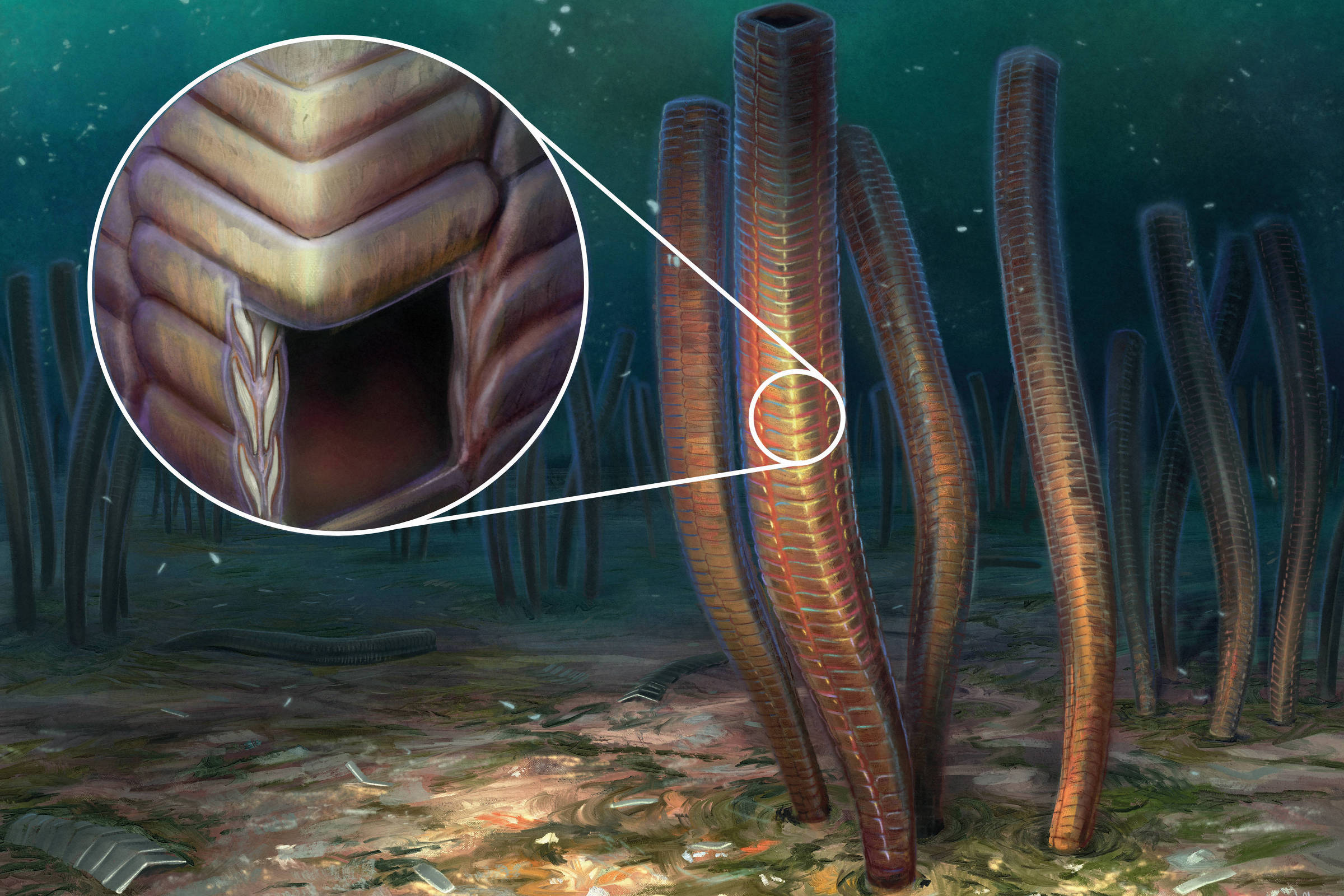Like some knights of ancient and medieval times, the mysterious being who lived over 540 million years ago was covered in an armor of solid plates, fitted one inside the other, which gave him some flexibility despite the protection. According to the Brazilian researchers who analyzed these fossilsIt is the oldest arthropod skeleton yet identified, with details that can help understand the evolution of most animals we know today.
The creature in question is Corumbella, so named because many of its fossils have been found in Corumbá, Mato Grosso do Solalthough there are records of invertebrates in rocks from Paraguay Based on United States of America.
Based on exceptionally well-preserved animal remains and advanced microscopy and tomography techniques, scientists have just published the most accurate description of an animal’s anatomical structure yet, in Article In the specialized journal iScience.
In addition to researchers from Brazil, the group includes collaborators from Scotland and the Germany.
Understanding how Corumbella lived and where it fits on the animal’s family tree is especially important because it is a corumbella They inhabit the oceans One of the most mysterious moments in the history of life on Earth. This is the Ediacaran period, a geological period in which multicellular organisms that can be seen with the naked eye became widespread.
The problem, however, is that the Ediacaran fossils have characteristics that are difficult to relate to later groups of animals, which are more clearly associated with the animal. the species we know today. Many have a “frond” structure (resembling large leaves), others are disc-shaped, and there are also what appear to be worm tracks on the sea floor.
“In these organisms, many organisms are ‘halfway’ between animals and something else that we don’t understand,” explains study coordinator Mirian Forancelli-Pacheco of UFSCar (Federal University of São Carlos). In any case, there are those who associate some of these fossils with cnidarians (a group of jellyfish today).
By the way, association with cnidarians has been the dominant hypothesis so far for anyone trying to classify Corumbella. Still, Pacheco says, “the new data we have access to may reveal evidence in favor of a new hypothesis of evolution.” “According to this hypothesis, this animal falls midway between animals with radial and bilateral symmetry.”
Simply put, this could mean that Corumbella would represent one of the largest and most ancient crossroads in animal evolution. Almost all of the animals we see around us today – Invertebrates, insects and spiders etc.- It belongs to the large group called Bilateria. That is, their body can be divided into a right side and a left side that are symmetrical to each other. A person’s right hand, for example, is a mirror image of his left hand.
Animals with radial symmetry “mirror” their body parts around a central axis. The easiest example to understand visually is that of a starfish, with its frequent arms curled to different sides. This is, however, a somewhat misleading example, since starfish are actually part of Bilateria – their larvae have bilateral symmetry, like ours. The ‘radical’ radial symmetry of animals belonging to groups older than Bilateria is found in cnidarians and spongy organisms, for example.
In the case of Kurumbela, things are more complicated. Reconstruction Made by the Brazilian team indicates that the creature was tubular in shape as it was attached to the sea floor; At its apex, however, it has acquired the symmetry of four sides crossed by a line (see technical reconstruction).
Moreover, it possessed what researchers called a cataphract skeleton. “We were inspired by the way the elements of military armor were organized,” says Gabriel Ladera Ossis, first author of the research.
The so-called cataphracts were heavily armed horse warriors who were present in armies such as those of the Persian Empire and the Eastern Roman Empire from the end of antiquity. The cuirass, which covered both the rider and his mount, was formed by overlapping metal scales, attached by wires (also metallic) to a layer of leather beneath.
Rather than metal, Corumbella’s shield was likely composed of plates and rings of the mineral aragonite, a type of calcium carbonate. “It could have provided protection against predators and increased lift,” Ossis says. According to the researchers, in fact, the potential appearance of predators should have been the main driver of the evolution of animal skeletons in that distant period.
“Each part of the skeleton was very rigid. But the organization and arrangement of these parts allowed a kind of expression that ensured the flexibility of the whole. It’s like a medieval knight who wore his armor, protected in a rigid shell, but did not lose the expressiveness of the movements,” compares Pacheco.
One possibility is that the animal fed by filtering seawater that passed through it. “It can also be a hanging eater, catching food particles with the help of cilia or tentacles, for example,” Ossis explains.

“Hardcore beer fanatic. Falls down a lot. Professional coffee fan. Music ninja.”






More Stories
The law allows children and adolescents to visit parents in the hospital.
Scientists pave the way for the emergence of a new element in the periodic table | World and Science
Can dengue cause hair loss? Expert explains how the disease affects hair